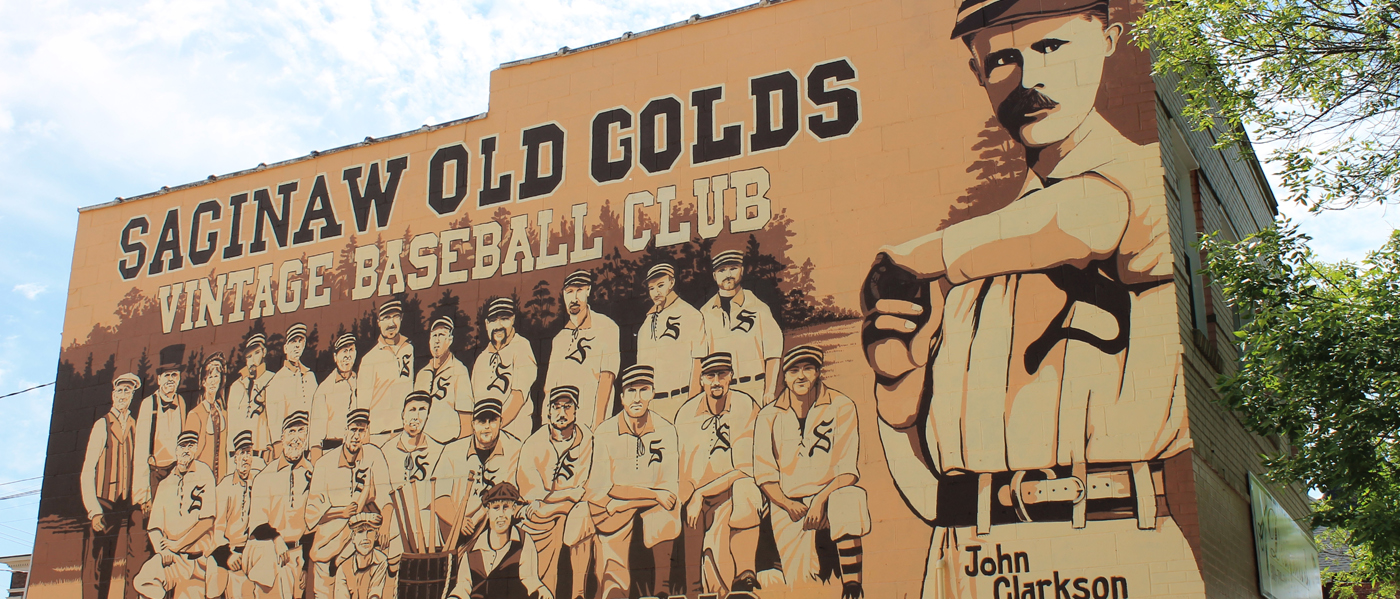History of Saginaw County
The County of Saginaw is located in Mid-Michigan, in the Great Lakes Bay Region that includes Saginaw, Arenac, Bay, Clare, Gladwin, Gratiot, Isabella, and Midland Counties. It’s comprised of hundreds of square miles of excellent agricultural land, forests, waterways, and manufacturing areas.
Saginaw is a community truly situated at the center of Michigan and all of its attractions.
- To the south are the major industrial and technical cities of Ann Arbor and Detroit.
- the north are Michigan’s wonderful natural attractions of lakes, recreation areas, and the Upper Peninsula.
- To the west is the heart of Michigan and outdoor opportunities.
- And to the east is Michigan’s Thumb, an area renowned for its outstanding farming industry.
The earliest evidence of a population in the Saginaw Valley is from Paleo-Indian nomads of around 12,000 years ago. They came to the Saginaw Valley to hunt the mammoth and other big game. They left behind them permanent records of their existence in some of the most valuable archaeological sites in Michigan. The population changed from nomadic Paleo-Indians to the Early Archaic culture, and then to the Middle Archaic culture, when the first permanent Indian settlements were made at around 3000 B.C.
The Early Woodland cultures followed, including the Hopewell Indians – the prehistoric mound builders – who settled along the Saginaw River around 500 B.C. By the time the first European explorers and missionaries arrived around 1650, the Late Woodland Indians were occupying the river settlements. The name Saginaw is derived from an Ojibway term “O-Sag-e-non” or “Sag-in-a-we” that means “to flow out” and probably refers to the outflow of the Saginaw River into the Saginaw Bay. The Ojibway were one of the Late Woodland Indian cultures.
Immediately after the War of 1812, the American Fur Company established a trading post on the west side of the Saginaw River. In 1822, Fort Saginaw was built at what is now Court and Hamilton Streets. But, due to the mosquito-infested swamp land that surrounded it, the Fort was abandoned in 1823. Then, in 1836, Saginaw City, population 400, was founded by Norman Little.
By the middle of the century, the population grew to 900, due in part to the German immigrants who established agricultural settlements in the area. Due to infusions of capital by Jesse Hoyt of New York, residents flourished on the eastern side of the Saginaw River as well and East Saginaw was incorporated as a village in 1854. The value of the land’s forests was heavily publicized by Norman Little and in 1855 there were 23 sawmills in the area producing a hundred-million board feet of lumber a year. By the 1880s, two sawmills alone each produced over 50-million board feet.
Intense rivalry and competition developed between Saginaw City and East Saginaw, with the latter being much more prosperous due to funds given by Jesse Hoyt. The rivalry resulted in many civic improvements for both, and a severe case of one-upmanship between the two communities. Architecturally, East Saginaw prospered quite well, with an elaborate 1898 French chateau-style post office (today it’s a museum) and a grand Richardsonian-style library built in 1890, named the Hoyt Library. The library was made possible by a gift of $100,000 from Jesse Hoyt in 1883, plus additional funds afterward.
From the late 1800s to the current day, Saginaw (the combination of both Saginaw City and East Saginaw) has seen its share of memorable events, tragedies, and accomplishments. It saw the transition from carriage works to one of the country’s first automobile dealerships, and from peacetime activities to being a key manufacturer of wartime materiél. It saw its residents become famous, such as actress Marie Dressler and cowboy actor Tim McCoy. It had part of itself destroyed in a terrible fire and severe floods, and was then rebuilt to greater proportions. By virtue of it all, the people of the community of Saginaw can be proud of their heritage. More information can be found at the Public Libraries of Saginaw.






